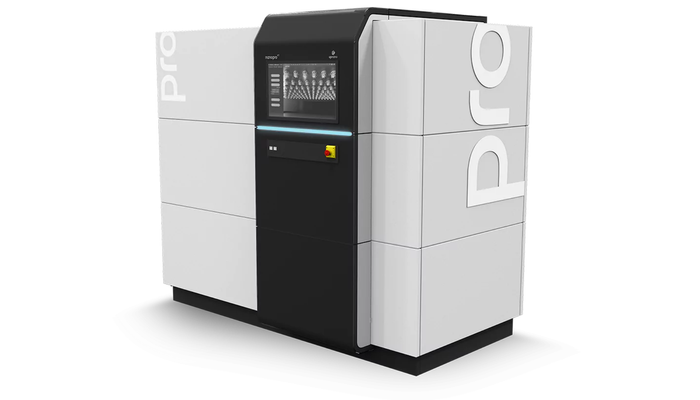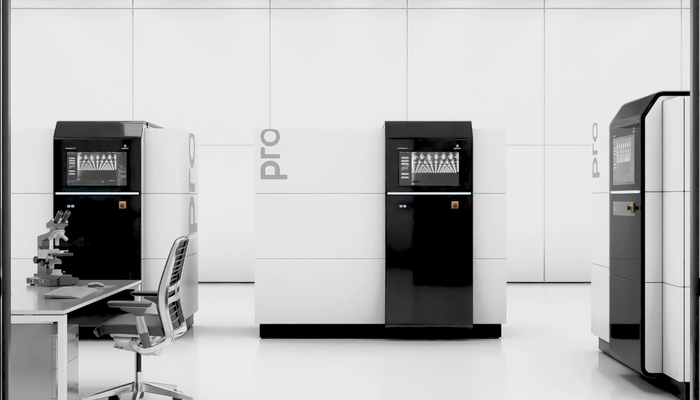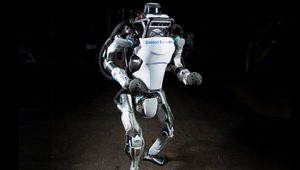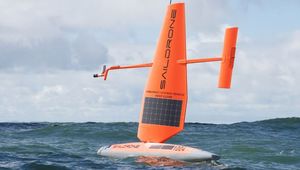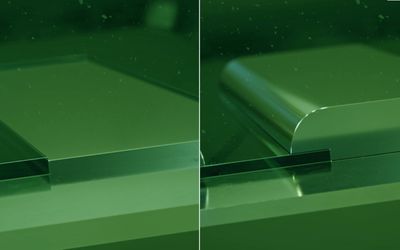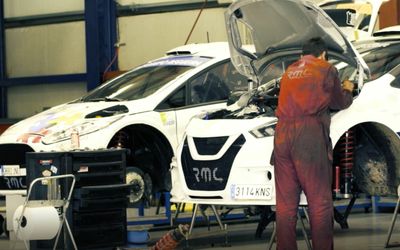NanoPro VT
Industrial-Scale, 2-Photon Polymerization (2PP) 3D Printer that powers the NanoPro Service
General
| Product Type | 3D Printing & Fabrication Tools |
| Applications | 3D Printing & Manufacturing |
| Key Features | 32 Megavoxels/second, HEPA 14 Filtered Air, Temperature Stability, Up to 7-watt, 515 nm wavelength |
Technical Specifications
| Technology | 2-Photon Polymerization (2PP) |
| Model | NanoPro VT |
| Prints Via | NanoPro Service |
| Optical Power Engine | 32 Megavoxels/second (million volume pixels/second) |
| Laser Power | Up to 7-watt, 515 nm wavelength |
| Maximum Print Range | 200 x 200 x 50 mm (XYZ) |
| Substrate Compatibility | Wide Range, including 8" Wafers |
| Objective & Substrate Exchange | Automated |
| Environmental Controls | HEPA 14 Filtered Air, Temperature Stability (0.1 °C), Vibration Isolation |
| Application | High Volume Production of Microparts |
Overview
The NanoPro VT is a newly developed 2PP 3D printer that acts as the powerful engine to run the NanoPro service, offering serial production of microparts with nanometer resolution. Building on the functionalities of the NanoOne series, the NanoPro VT introduces "Voxel Tuning" technology.
Powered by a 7-watt femtosecond laser and featuring a 32 Megavoxels/second (million volume pixels/second) throughput, it surpasses existing 2PP technology in speed and precision. With a maximum print range of 200 x 200 x 50 mm, the NanoPro VT accommodates large substrates and complex geometries.
The NanoPro VT operates within an ISO 5 cleanroom environment, ensuring optimal conditions for producing microparts with exceptional accuracy and repeatability. This technology forms the foundation of NanoPro service, empowering industries to seamlessly transition from prototyping to high-volume manufacturing of complex, high-precision microparts.
NanoPro Service: Industrial Micropart Production
The NanoPro service is the first and only 2PP-based printing service available for industrial scale quantities. Until now, industries have relied on microinjection molding or milling, which are inept at creating complex , high-precision structures. The NanoPro service is designed for clients facing challenges with the miniaturization of production parts, offering a solution where traditional manufacturing falls short. If your industrial microparts are too small or complex for current technology like microinjection molding or milling, NanoPro provides a viable alternative.
The NanoPro service excels in producing microparts with high precision, achieving tolerances and enabling the creation of features smaller than 100 nm. Leveraging the power of the NanoPro VT, the service facilitates the production of complex microstructures with unlimited design freedom. By enabling the printing of entire structures in a single process, NanoPro eliminates the need for intricate assembly steps and reduces manufacturing time. This ensures the production of high-volume quantities with the precision demanded by modern applications.
Use Cases
The NanoPro VT enables the production of a diverse range of microparts across various industries including:
Microfluidics: The NanoPro VT enables the production of intricate microfluidic components, such as those used in IVF applications, with high precision and in large volumes. This technology allows for the creation of complex microchannels and structures essential for delicate biological processes.
Microsensorics: The NanoPro VT facilitates the production of advanced microsensors, including those integrated into intelligent wound dressings. These sensors can monitor vital parameters, such as temperature and pH, enabling real-time assessment of wound healing without the need for frequent dressing changes.
Microneedles: The NanoPro VT enables the mass production of microneedle arrays for painless and efficient vaccine delivery. This technology is crucial for supporting global vaccination programs and addressing the challenges of widespread vaccine distribution.
Microoptics: The NanoPro VT allows for the production of high-precision micro optical components, such as microlenses and optical interconnects, essential for applications in photonics and optical communications. This technology enables the creation of complex optical systems with unprecedented levels of integration and performance.
Polymer MEMS: The NanoPro VT enables the production of intricate polymer micro-electro-mechanical systems (MEMS), including optical actuators, lab-on-a-chip devices, and complex micro-mechanical components. This technology eliminates the need for complex assembly processes, reducing manufacturing costs and improving overall efficiency.
Features of NanoPro VT
The NanoPro VT, a newly developed high-performance 3D printer driving the NanoPro service, enabling the serial production of polymeric microparts. Let’s explore some of the salient features:
Voxel Tuning Technology
The NanoPro VT incorporates innovative "Voxel Tuning" technology, enabling detailed control over the 2PP printing process. This advanced technique allows for a high throughput of 32 Megavoxels (million volume pixels) per second compared to projection-based technologies (DLP) at only two Megavoxels in about 3-10 seconds. This translates into a throughput of several thousand mm3 per hour, many factors higher than any other 2PP technology currently on the market.
Voxel Tuning provides precise control over the interaction of the laser with the photosensitive material. This results in enhanced resolution, improved accuracy, and the ability to construct intricate structures and tolerances below 100 nm.
Expanded Print Dimensions and Substrate Flexibility
The NanoPro VT offers a significant increase in print dimensions, with a maximum print range of 200 x 200 x 50 mm. This expanded build volume supports the fabrication of parts on larger substrates, including 8-inch wafers, and accommodates high-volume arrays and other complex surface geometries.
Furthermore, the integration of automated objective and substrate exchange systems enhances the versatility of the printer. NanoPro service further enables seamless transitions between printing tasks, minimizing downtime and maximizing productivity.
Enhanced Environmental Controls for Optimal Performance
To ensure optimal printing conditions and maintain the highest level of precision, the NanoPro service incorporates a range of environmental controls. HEPA 14 filtration system maintains a sterile environment within the printing chamber. This minimizes the risk of contamination and ensures the integrity of the produced microparts. To ensure contamination-free prints, NanoPro service, 2PP 3D printers are housed in a cleanroom environment on-site.
Precise temperature control within 0.1 °C is maintained to ensure consistent and reliable performance across all printing operations. Additionally, vibration isolation systems are integrated to minimize the impact of external vibrations.
Streamlined Post-Processing for Enhanced Efficiency
The NanoPro VT integrates automated post-processing steps, streamlining the production workflow and minimizing manual intervention. These automated steps include washing, drying, and packaging, which are tailored to the specific geometry and requirements of each part.
For applications demanding higher levels of precision, the system can be further customized with additional product-specific post-processing steps developed in collaboration with customers. This integration of automated processes reduces the need for extensive manual post-processing, enhancing overall productivity and throughput.
References
Recommended Specs
Continue Reading
RMC Motorsport drastically reduces its production times and manufacturing costs by 3D printing end-use parts for their rally cars
RMC Motorsport, an automotive company dedicated to the rally sector, has internalized & optimized internal processes and achieved greater design capacity by involving 3D printing technology in the manufacturing process of their rally cars.
The progress of screen printing towards fine line printing has been incredible going from 100 µm features before 2010 to 70 µm to 2015 to 40 µm in 2018 and now pushing - in development- towards 20 µm and less. In parallel, the wet thickness of the printed line have gone down from 12um or so in 2018 to now just 4um.
